The construction sector is responsible for more than 35% of the waste generated in the European Union. At the same time, the materials and products used in this sector can have a life span of several decades. In the long term, having data on the origin of each material would be ideal to promote its circularity, but would it be realistic to design a system that will be usable in 75 years’ time?
Or, doing the reverse exercise, what systems from 50 years ago are still in use today?
In 2020, the average lifespan of a company was just over 21 years, compared with 32 years in 1965.
How can we assure that the products produced for circular models will still be serviceable and maintained after 50 to 100 years?
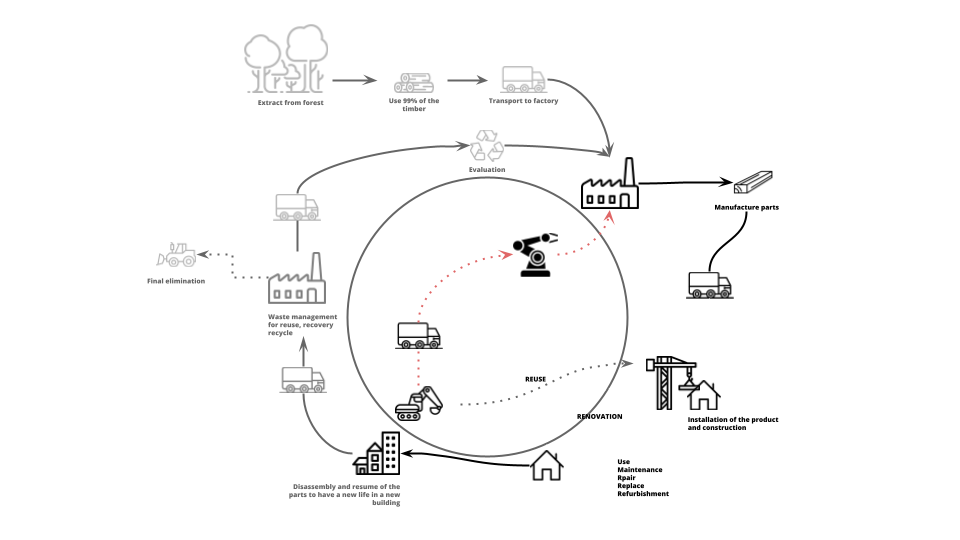
But what happens if the business closes?
Who takes over the circular model?
Is all the intellectual property lost along with the workflow?
Can blockchain technology be coupled with material passports to assist in the decarbonization of the construction industry?
Material Passport
A material passport is a digital document or record that tracks the origin, composition, and lifecycle of materials used in the production of goods or construction projects. It serves as a comprehensive inventory, providing detailed information about the materials’ properties, sources, processing methods, and environmental impacts.
The primary purpose of a material passport is to promote transparency, traceability, and sustainability throughout the supply chain and product lifecycle. By documenting the journey of materials from extraction to disposal or reuse, material passports enable stakeholders to make informed decisions about resource management, waste reduction, and environmental conservation.
Key elements typically included in a material passport may encompass:

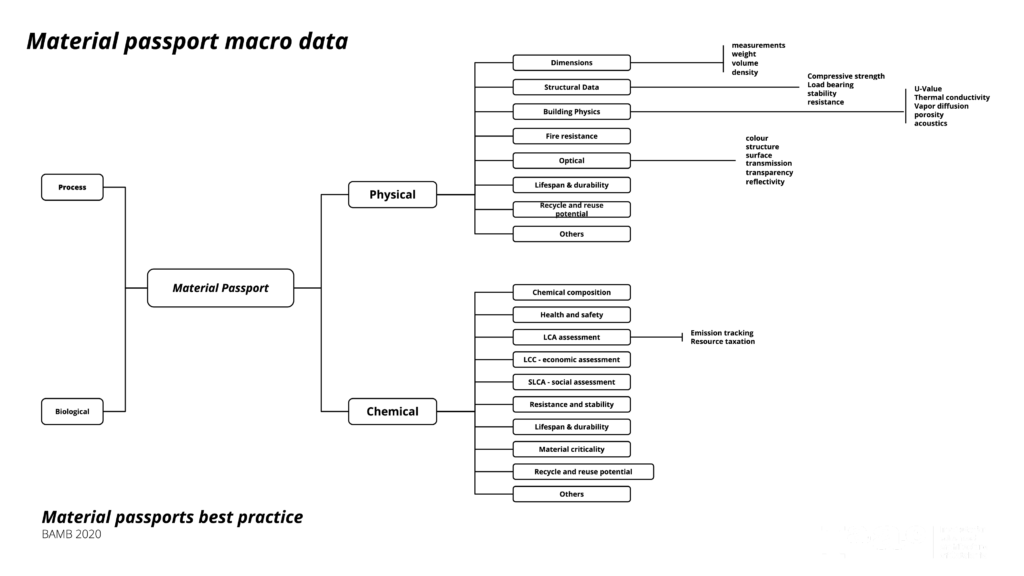
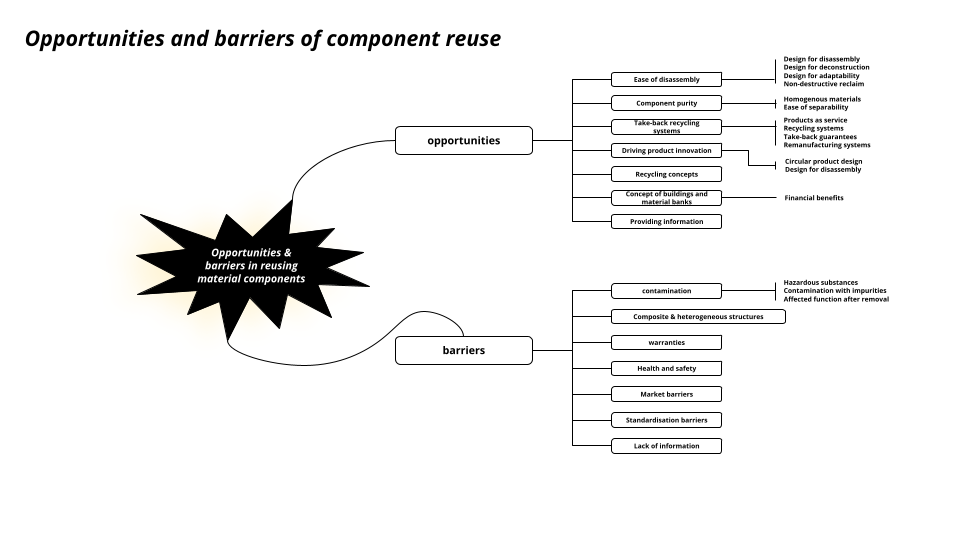
Material passports play a crucial role in advancing circular economy principles by facilitating the transition from a linear “take-make-dispose” model to a more sustainable and regenerative approach. By fostering collaboration among stakeholders, including designers, manufacturers, suppliers, and consumers, material passports drive innovation, accountability, and responsible consumption practices across industries.
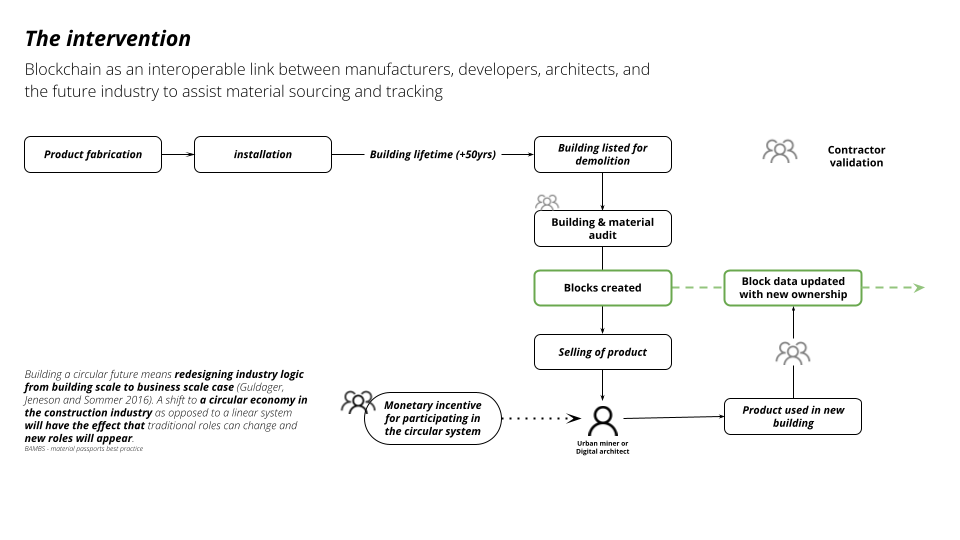
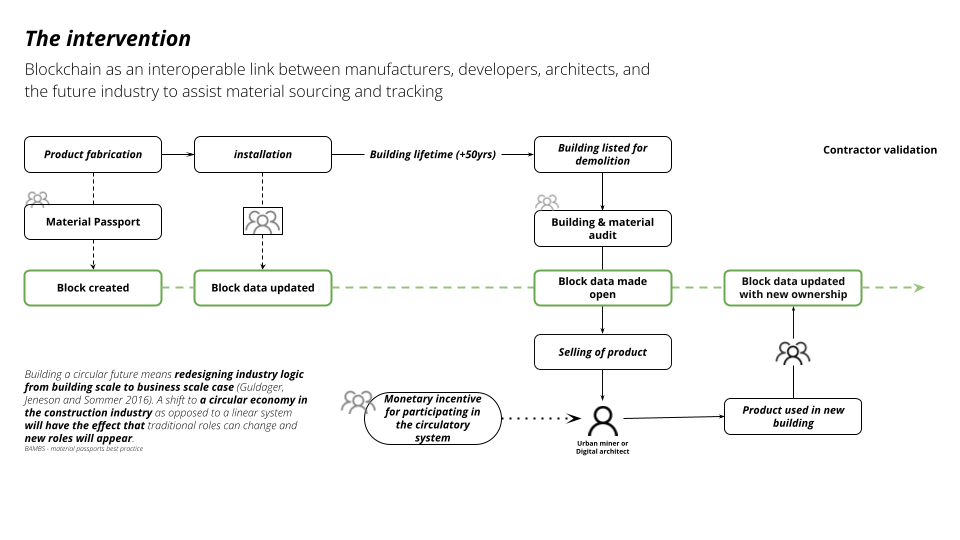
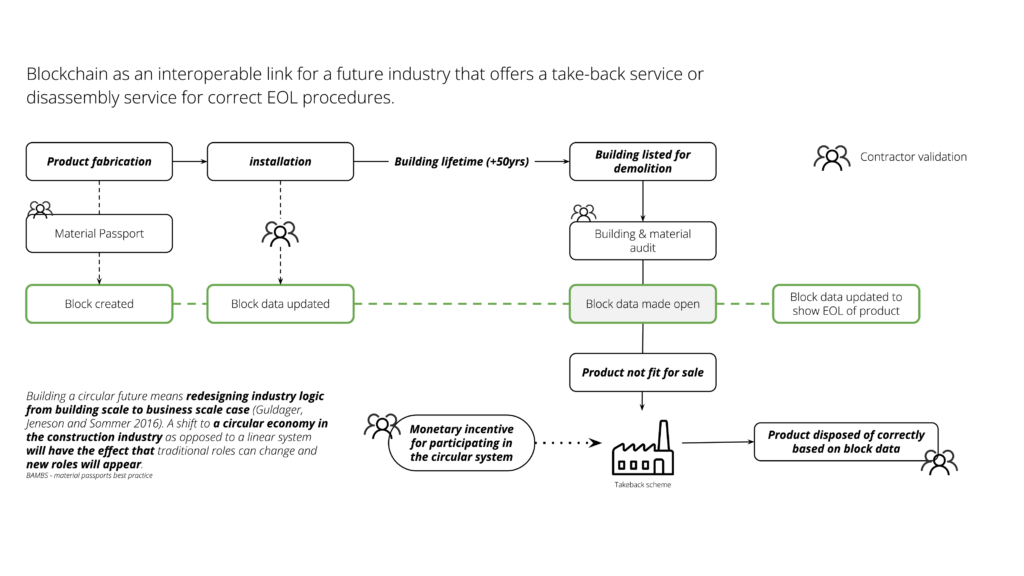

The integration of material passports with blockchain technology necessitates a robust infrastructure blend to facilitate seamless tracking and management of materials throughout their lifecycle. A unique identifier system, linked to cryptographic keys, forms the cornerstone of this integration, enabling secure access to detailed material information via digital interfaces. User interface applications play a pivotal role in providing intuitive platforms for stakeholders to interact with material databases efficiently.
Middleware solutions are imperative for harmonizing data structures across varied systems, ensuring interoperability and consistency. Additionally, Application Programming Interfaces (APIs) serve as vital conduits for integrating material passport systems with existing interfaces like Building Information Modeling (BIM) platforms, enhancing collaboration and data exchange capabilities. The fusion of physical and digital infrastructures empowers stakeholders to leverage blockchain technology for transparent, traceable, and sustainable material management practices.

A block serves as a fundamental unit of data storage and transaction verification within a decentralized and immutable ledger. This abstract delineates the components encapsulated within a block, elucidating its multifaceted nature and pivotal role in maintaining the integrity and transparency of blockchain networks.
Primarily, a block contains comprehensive material identification attributes, encompassing both physical and chemical properties of materials utilized in various processes and products. This information serves as a foundational layer for tracking and tracing material provenance throughout its lifecycle.
In addition to material identification, blocks house production data, offering insights into the manufacturing processes, supply chain logistics, and quality control measures employed across diverse industries. This data fosters accountability and efficiency, facilitating informed decision-making and process optimization.
Moreover, smart contracts and compliance protocols embedded within blocks ensure adherence to predetermined rules and regulations, automating transactions and enforcing regulatory compliance seamlessly.
Ownership history, a critical component of blockchain blocks, chronicles the lineage of assets and materials, enabling transparent and auditable ownership transfers while mitigating the risk of fraudulent activities.
Furthermore, blocks encapsulate certification and verification records, validating the authenticity and integrity of materials, products, and transactions. This fosters trust and reliability within decentralized networks, enhancing stakeholder confidence and market integrity.
Lastly, blocks contain valuable insights into design-to-disassembly methodologies, offering a holistic view of product lifecycles and end-of-life strategies. This information catalyzes sustainable practices, promoting circular economy principles and resource optimization.


